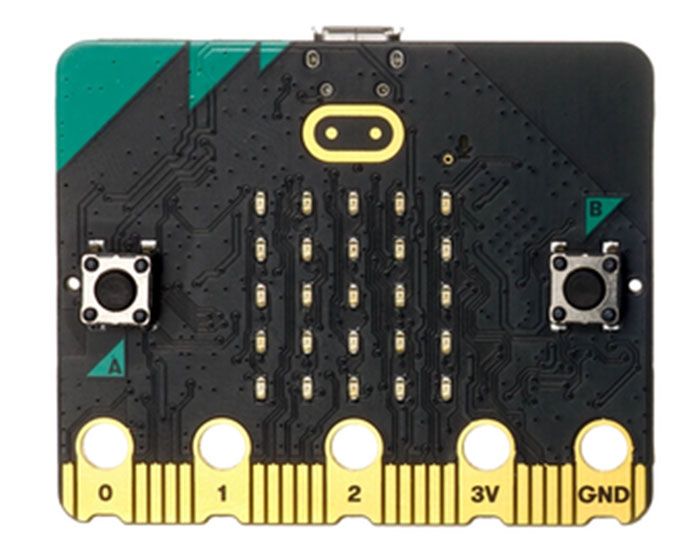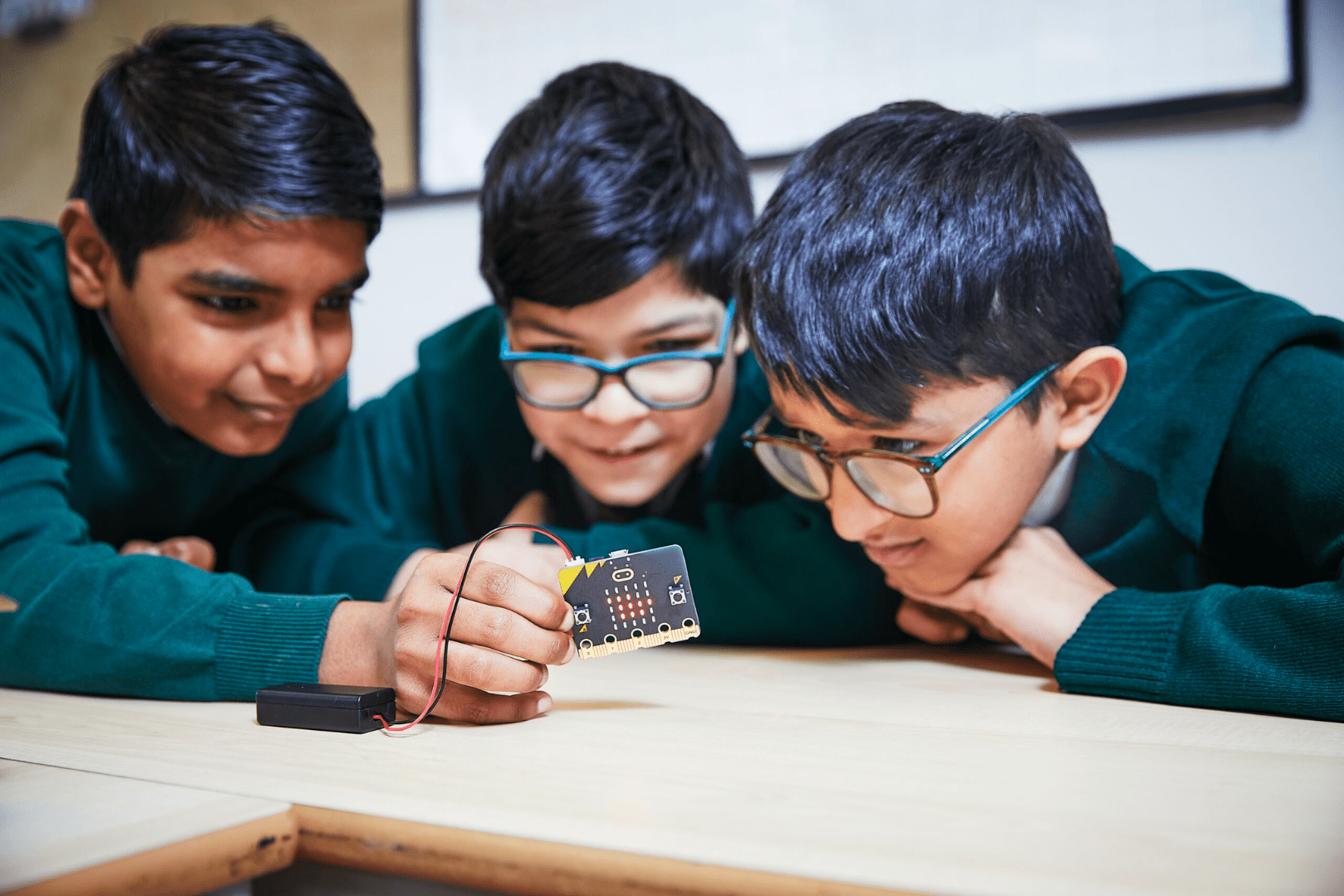Introduction
Micro:Bit is a small programmable device that has made a significant impact on education worldwide. It offers endless possibilities for engaging students in hands-on learning experiences while developing essential digital literacy and 21st-century skills. Let’s delve deeper into how this innovative technology is transforming education.

What is Micro:Bit?
Micro:Bit is a pocket-sized computer designed to inspire creativity and experimentation in learning. It features an array of sensors and LED lights that can be programmed to perform a variety of tasks, making it a versatile tool for exploring coding, electronics, and problem-solving.
The History of Micro:Bit in Education
Micro:Bit was initially developed by the BBC in the UK as a way to introduce coding to students in a fun and accessible manner. Since its launch in 2016, Micro:Bit has gained popularity in classrooms globally, with educators recognizing its potential to enhance teaching and learning in various subjects.
Benefits of Using Micro:Bit in the Classroom
The use of Micro:Bit in education offers numerous benefits for both educators and students. It promotes collaboration, critical thinking, and creativity while equipping students with valuable digital skills that are essential in today’s technology-driven world.
Integrating Micro:Bit into Curricula

Incorporating Micro:Bit into Science and Mathematics Classes
In science and mathematics classes, Micro:Bit can be used to conduct experiments, collect data, and analyze results. Students can program the device to measure temperature, light intensity, and more, providing a hands-on approach to learning these subjects.
Using Micro:Bit for Creative Arts and Design Projects
In creative arts and design projects, Micro:Bit serves as a medium for students to explore their artistic talents through programming. They can create interactive artworks, wearable tech, and innovative designs, fostering creativity and innovation in the process.
The Role of Micro:Bit in Teaching Computer Programming
Micro:Bit plays a crucial role in teaching computer programming by offering a tangible platform for students to practice coding concepts. From basic algorithms to complex programs, students can gradually build their programming skills using Micro:Bit as a learning tool.
Hands-On Learning with Micro:Bit
Engaging Students with Interactive Projects
Through interactive projects with Micro:Bit, students can engage in experiential learning that encourages curiosity and exploration. Whether designing games, building robots, or crafting smart devices, the possibilities are endless for hands-on learning experiences.
Building Problem-Solving Skills with Micro:Bit Challenges
Micro:Bit challenges present students with real-world problems that require critical thinking and problem-solving skills to solve. By tackling these challenges, students enhance their ability to analyze, innovate, and find solutions through trial and error.
Enhancing Collaboration and Teamwork Through Micro:Bit Activities
Collaborative activities with Micro:Bit encourage teamwork, communication, and sharing of ideas among students. By working together to program and create projects, students learn to collaborate effectively and leverage each other’s strengths to achieve common goals.
Professional Development for Educators
Training Teachers to Use Micro:Bit Effectively
Educators can enhance their teaching practices by undergoing training and professional development in using Micro:Bit. Resources such as online courses, workshops, and tutorials are available to help educators become proficient in integrating Micro:Bit into their lessons.
Creating a Supportive Community for Micro:Bit Educators
Joining a supportive community of Micro:Bit educators allows teachers to share ideas, resources, and best practices for using the device in the classroom. Networking with fellow educators fosters collaboration and ongoing learning opportunities to enhance teaching effectiveness.
Overcoming Challenges in Implementing Micro:Bit in Schools
Educators may face challenges when implementing Micro:Bit in schools, such as limited resources, time constraints, or resistance to change. By addressing these challenges proactively and seeking support from peers and administrators, educators can overcome obstacles and successfully integrate Micro:Bit into their teaching practices.
The Future of Micro:Bit in Education
Innovations and Developments in Micro:Bit Technology
As technology evolves, we can expect to see advancements and developments in Micro:Bit technology that enhance its capabilities and expand its applications in education. From improved sensors to new programming features, the future of Micro:Bit holds exciting possibilities for educational innovation.
Scaling Up the Adoption of Micro:Bit in Schools Worldwide
To encourage the widespread adoption of Micro:Bit in schools globally, initiatives and partnerships are needed to provide access to the device and training for educators. By advocating for the benefits of Micro:Bit and promoting its integration in curricula, we can scale up its usage and impact on education worldwide.
Empowering Students through Digital Literacy and 21st Century Skills
Micro:Bit empowers students with essential digital literacy and 21st-century skills that are crucial for success in today’s digital age. By equipping students with the tools and knowledge to navigate technology confidently, Micro:Bit prepares them for the challenges and opportunities of the future.
Conclusion
In conclusion, the Micro:Bit revolutionizes education by offering hands-on learning experiences that enhance digital literacy and problem-solving skills. By integrating Micro:Bit into curricula and providing professional development for educators, schools can prepare students for the digital age and empower them to thrive in a technology-driven world.
Explore the Limitless Potential of Micro:Bit on Aytoo and Immerse Yourself in a Universe of Technological Innovation, Turning Every Idea into an Exciting Reality to Explore!
FAQs
- Q. How can I get started with Micro:Bit in my classroom?A. Begin by exploring online resources and tutorials provided by the Micro:Bit Foundation. You can also join a local Micro:Bit educators’ community for support and ideas.
- Q. Do I need prior programming experience to use Micro:Bit?A. No, Micro:Bit is designed to be user-friendly and accessible to educators and students of all levels. It provides a fun and engaging way to learn programming concepts.
- Q. What age group is Micro:Bit suitable for?A. Micro:Bit is suitable for students of all ages, from elementary to high school. It can be adapted to different skill levels and subject areas to cater to diverse learning needs.





 +212 6 62 87 72 15
+212 6 62 87 72 15


